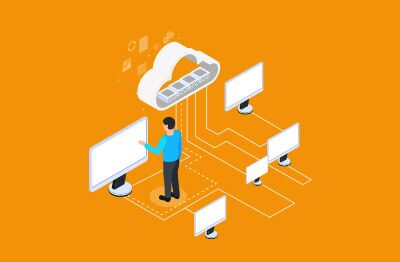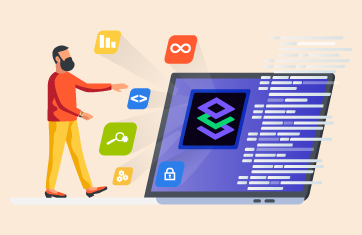What is a Thin Client?
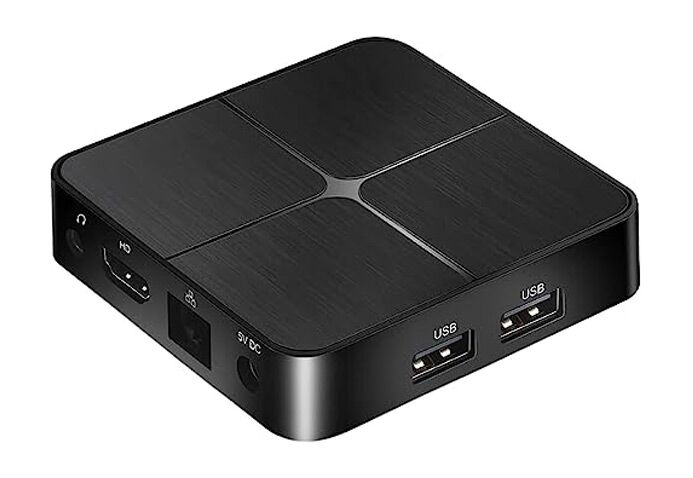 A thin client is a simplified device that relies on a separate server (usually located remotely or in the cloud) to run programs and complete user tasks. It connects to the server through a remote network connection with very little computing happening on an individual user’s device. Because most of the computation occurs and data is stored on the server, thin clients are regarded as a secure efficient option. With benefits typically including lower power consumption, less heat given off and passive cooling (no noisy fans) – thin clients can be a practical choice in larger offices and call centers.
A thin client is a simplified device that relies on a separate server (usually located remotely or in the cloud) to run programs and complete user tasks. It connects to the server through a remote network connection with very little computing happening on an individual user’s device. Because most of the computation occurs and data is stored on the server, thin clients are regarded as a secure efficient option. With benefits typically including lower power consumption, less heat given off and passive cooling (no noisy fans) – thin clients can be a practical choice in larger offices and call centers.
Thin client performance typically depends on a device’s capabilities to accept and processes streamed pixels from the server. Performance is determined by the quality and bandwidth of the network connection and also the capabilities of the device to encode and decode remoting protocols and codecs such as PCoIP, H.264 / H.265 and Citrix EDT / HDX / ICA.
Best thin clients designed to handle heavyweight 3D and graphical applications often have dedicated silicon to ensure performance such as GPUs or high-quality DSP (Digital Signal Processing) units.
The most capable thin clients are designed to handle demanding use cases where a high-end workstation or laptop is normally used such as supporting multiple-monitors, supporting exotic haptic and USB devices and highly graphical CAD applications.
How do Thin Clients work?
A thin client endpoint typically runs a thin client OS designed for the purpose. Client software is used to connect to server-side hardware and delivery stacks such as Microsoft AVD / M365 Cloud PC, Citrix Apps and Desktops, VMware Horizon, Amazon WorkSpaces / AppStream 2.0 or similar.
Historically thin clients were sold and marketed as hardware devices, often with additional licensing costs for firmware and OS updates. In recent times though many vendors have focused on software only offerings around the thin client OS and management software for end-points. Software only options are offered to be run on other vendors hardware thin clients or on traditional “thick clients” (sometimes called “fat clients”) such as laptops and desktop PCs to convert them to thin clients.
Enterprise thin client vendors typically offer sophisticated management solutions to allow organizations to deploy, manage and patch tens of thousands of thin client end points and manage the user experience those end users encounter. Some vendors offer additional services such as access gateways to manage thin client access too.
Thin client OSs are usually Linux or Unix based, although there are a few offerings around the Windows embedded ecosystem. These OSs typically are far less demanding that a consumer PC OS such as Windows 11 and are why thin client OSs are often used to extend the life of old laptops, which may be below the specifications needed for heavyweight modern consumer versions of OSs such as Windows. Thin client technologies can offer significant cost savings if they remove the need to license Windows like OSs for a large number of end-point laptops.
In what ways can Thin Clients be used?
With shared terminal services, all users at thin client stations share a server-based operating system and applications. Users of a shared services thin client are limited to simple tasks on their machine like creating folders, as well as running IT-approved applications.
Desktop virtualization, or UI processing, means that each desktop lives in a virtual machine, which is partitioned off from other virtual machines in the server. The operating system and applications are not shared resources, but they still physically live on a remote server. These virtualized resources can be accessed from any device that is able to connect to the server.
A browser-based approach to using thin clients means that an ordinary device connected to the internet carries out its application functions within a web browser instead of on a remote server. Data processing is done on the thin client machine, but software and data are retrieved from the network. Often the thin client OS is provided with a built-in browser.
Who are the main Thin Client vendors?
There are several prominent vendors in the thin client market. Some of the main players and brands include:
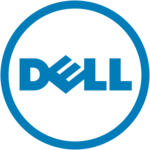 Dell offers a range of thin client solutions under their Wyse brand, including hardware-based thin clients, software thin clients, and zero clients. They provide options for various use cases and environments. Dell’s own thin client OS is called ThinOS.
Dell offers a range of thin client solutions under their Wyse brand, including hardware-based thin clients, software thin clients, and zero clients. They provide options for various use cases and environments. Dell’s own thin client OS is called ThinOS.HP provides thin client solutions through their HP Thin Client product line. They offer a wide range of hardware-based thin clients, zero clients, and software-based solutions designed for different work environments and virtualization technologies.
 IGEL specializes in software-based thin clients and endpoint management solutions. They offer thin client operating systems and software clients that can be installed on existing hardware, repurposing them as thin clients. IGEL used to sell physical thin clients however in recent years they have stopped selling hardware and work with partners such as Dell, HP, Lenovo and LG to provide new hardware devices with the benefits of the very rich features of the IGEL software offering.
IGEL specializes in software-based thin clients and endpoint management solutions. They offer thin client operating systems and software clients that can be installed on existing hardware, repurposing them as thin clients. IGEL used to sell physical thin clients however in recent years they have stopped selling hardware and work with partners such as Dell, HP, Lenovo and LG to provide new hardware devices with the benefits of the very rich features of the IGEL software offering.Lenovo provides thin client solutions under their ThinkCentre series. They offer a range of hardware-based thin clients with different specifications to suit various user requirements.
NComputing specializes in affordable thin client solutions. They offer a variety of hardware-based thin clients and software clients that can be used with existing devices, providing cost-effective options for virtual desktop deployments.
10ZiG offers both hardware and software thin client solutions and are a popular choice in EUC computing for use with technologies such as AVD, Citrix and VMware.
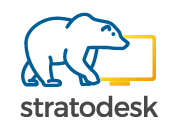 Stratodesk focuses on software-based thin client solutions. Their flagship product, NoTouch OS, allows organizations to repurpose existing hardware or run thin clients on new devices. NoTouch OS is often used to repurpose very low cost commodity devices such as the Raspberry Pi or Intel NUC for use in call centers or education.
Stratodesk focuses on software-based thin client solutions. Their flagship product, NoTouch OS, allows organizations to repurpose existing hardware or run thin clients on new devices. NoTouch OS is often used to repurpose very low cost commodity devices such as the Raspberry Pi or Intel NUC for use in call centers or education.
Can a Thin Client act as a PC?
Technically yes, a Thin Client can be used as a PC. However, you would need to use an external storage device like a USB or external hard drive to store any significant amount of data. It should be emphasized that thin clients are primarily designed to offload processing tasks to a central serve, and whilst they can act as a PC to a limited extent it unlikely to be an optimal solution. There are few scenarios where a thin client can function similarly to a PC:
- Local Applications: Some thin clients have the capability to run certain local applications. These applications are typically lightweight and may be specific to the thin client’s embedded operating system. While the processing power of a thin client may be limited compared to a traditional PC, it can still handle basic productivity applications and perform simple tasks. The most common example is that most thin clients now include a browser which allows users to access online services and SaaS products, this type of browser use case was leveraged widely for home schooling during the COVID-19 pandemic.
- Peripheral Support: Thin clients often have connectivity options for peripherals such as keyboards, mice, monitors, printers, and USB devices. This allows users to connect and use these peripherals with the thin client, similar to a PC. However, it’s important to note that not all thin clients support all types of peripherals and many preclude USB devices for secure use cases, so compatibility may vary.
- Offline Mode: Some thin clients offer an offline or local mode, allowing users to continue working even when disconnected from the central server or network. In this mode, the thin client may rely on cached data or locally installed applications to provide limited functionality until the connection is restored.
- Repurposing: In certain cases, a thin client can be repurposed as a PC by installing a different operating system, such as a lightweight version of Linux or a thin client-specific Linux distribution. This enables the thin client to function more like a traditional PC with a broader range of applications and capabilities. However, this may require technical expertise and compatibility considerations.
It’s important to note that the primary purpose of a thin client is to provide access to applications and resources hosted on a central server. While it may offer some PC-like functionalities, its processing power, storage capacity, and local application support are generally more limited compared to a traditional PC. Using a thin client primarily as a PC would come with all the overheads of managing end user laptops that thin client infrastructures are deliberately chosen to avoid.
What are the benefits of a Thin Client?
Thin Clients offer several benefits that can improve the efficiency and security of an organization.
- Increased security
- Lower cost of end-point
- Less desirable to steal vs. laptops, a consideration in an education classroom or lab environment
- More manageable
- Easily scalable
- Centralized IT
- Remote Work Solution
- Flexible for upgrades and rollouts
- Lower power consumption and running costs
- Long lifecycles
- Easy to swap out with spare units for quick fixes at remote sites
Thin clients have some processing capability and can execute certain tasks locally, such as rendering graphics or handling peripheral devices. In contrast, zero clients have minimal or no processing power and rely entirely on the server for computing and processing tasks. Zero clients are often used for military use cases where security is paramount and absolutely no data should be held on the end-point even temporarily.
A thick client (sometimes called a “fat client”) refers to a typical personal computer/laptop that does all its own data processing. Thick clients are generally considered harder to secure and manage, costlier to deploy, and tend to consume more energy. They typically include more hardware than thin clients, but also typically have more features. Thick clients such as laptops tend to have a shorter lifecycle within organizations, often only 3 years before replacement, whereas thin clients are often used for 5+ years.
The energy and resource costs of thin clients relative to thick clients, plus the ability to recycle or extend the use of older endpoints with thin client OSs, mean they are often adopted and considered within Circular IT and green IT strategies. See, Repurposing end of life notebook computers from consumer WEEE as thin client computers – A hybrid end of life strategy for the Circular Economy in electronics – ScienceDirect, for an academic take on this approach.
Support for the latest virtual technologies
If you want to deploy Thin Clients in your organization, there is plenty of support for the various virtual and cloud technologies such as Citrix, VMware, AVD, Amazon WorkSpaces, Nutanix etc.
In general, performance will be best with those thin clients designed to support the features and technologies you use. Most VDI vendors run a thin client partner program that helps customers select thin clients that will suit their use cases, e.g. if you are using VMware Horizon and the Blast Extreme program choosing a thin client verified and confirmed as compatible is a good idea. Compatibility matrices and lists often cover features such as peripheral / USB support, multiple monitor capabilities and performance baselines beyond simply “will it work”.
| Company | Thin Client Program |
| VMware Compatibility Guide | |
| Citrix Ready Program | |
| Nutanix Ready Program | |
| AWS Partner Device Catalog |
Applicability of Thin Clients to fulfil most Industries’ IT needs
-
Thin client For Financial Institutions
As financial institutions need to abide by strict laws and regulations at all times, their IT infrastructure should deliver reliable access to real-time data and meet customer needs at all times. Thin clients offer ergonomic (compact, low-noise) advantages not only in on-premises setup but also in cloud computing where the entire data stays on the cloud.
-
Thin clients Empowering Educational Institutions
In this digital era, the educational institutions that impart knowledge and skills to prepare students for the practical world, should have more secure and ease to access features in a device. So, it is important for students and teachers to have readily accessible technology that facilitates a dynamic learning environment. It is also important that the administration has control of each and every computer system to ensure the best possible usage of technology for educational purposes. Thin client technology gives the administrator complete control of the operations on each system along with the power to limit operational capability on a particular system.
-
Thin clients in Healthcare
Healthcare specialists demand the same easy mobility and secure IT environment like users in other industries as they almost always make critical decisions. So, when these professionals boot up a screen from a device of their choice, the desktop presented must consistently deliver applications and data needed to serve patients. The same can be said for the increased usage of mobile devices which many professionals use for transferring patient files. As a result, these users need highly secure and reliable digital workspace, whether they are in the main hospital, a remote site, home clinic or managing EMR/EHR systems. They also demand IT solutions offering security controls that promote data integrity and safeguard sensitive patient information.
-
Thin clients are a perfect solution for retail
With the ‘Plug and Go’ feature of thin clients, they make a perfect choice for the retail industry who can set up new stores and offices within minutes with all the security features.
What are the Challenges to Monitoring Thin Clients?
Monitoring thin clients can present some unique challenges compared to traditional desktops.
- Limited Local Monitoring Capabilities: Thin clients typically have minimal local processing power and storage, which can restrict the ability to install and run monitoring agents or software directly on the client itself. This limitation may require alternative methods or specialized monitoring solutions that can gather information from the central server or network infrastructure. Since thin clients are often chosen for their nature as a secure locked-down solutions many organizations are reluctant to or prohibited by regulation from installing or using an agent on the end-point. Any agented solution will need to implement specific security oriented features. Many vendors offer APIs via which third-party solutions can access metrics, logs and other performance data.
- Centralized Monitoring: Since thin clients rely heavily on the central server or network for processing and data storage, monitoring often needs to focus on the server infrastructure and network performance. Monitoring tools should be capable of gathering data from server logs, performance metrics, and network traffic to gain insights into the overall health and performance of the thin client environment.
- Network Dependency: Thin clients heavily depend on network connectivity to function properly. Any network issues or disruptions can impact the user experience and overall performance of the thin clients. Monitoring the network infrastructure, including switches, routers, and bandwidth usage, becomes critical to identify and address potential bottlenecks or connectivity problems. VDI and protocol monitoring is essential if thin clients are being used with those technologies.
- User Experience Monitoring: Monitoring the user experience is essential for ensuring thin clients deliver optimal performance. This includes monitoring application responsiveness, latency, screen updates, protocol behavior, and input/output responsiveness. User experience monitoring tools can capture user interactions, measure response times, and identify any performance degradation or usability issues.
- Security Monitoring: Thin clients play a role in data security, as sensitive information resides on the central server rather than locally on the client. Monitoring should encompass security aspects such as user authentication, access controls, and data transmission between the client and server. It is important to monitor for any unauthorized access attempts, anomalies in user behavior, or potential security breaches. Often it will be necessary to monitor third-party authentication and access technologies such as Azure AD, Active Directory or OKTA.
- Scalability and Volume: Monitoring thin clients in large-scale deployments can be challenging due to the sheer volume of clients and data generated. Monitoring systems should be capable of handling the scale and efficiently collecting, storing, and analyzing monitoring data from a large number of thin clients. Solutions based around bespoke integrations with vendor APIs will usually offer better scalability than those that leverage SSH mechanisms.
To overcome these challenges, it is advisable to utilize monitoring solutions specifically designed for thin client environments. These solutions often provide centralized management and monitoring capabilities, integration with virtualization platforms, and specialized monitoring features tailored to the unique characteristics of thin clients.
How does eG Enterprise monitor Thin Clients efficiently?
Monitoring of endpoints is essential to get the end-to-end picture of digital workspace performance and to enable fast and accurate troubleshooting of problems. eG Enterprise provides in-depth performance monitoring of thin clients and all of the supporting tiers. It also includes customized monitoring and reporting of virtual desktop environments accessed via thin clients. The eG Reporter addresses the unique monitoring requirements of these thin client environments. It provides valuable insights into different aspects of a thin client infrastructure’s performance. This includes:
- Reports that provide a comprehensive overview of the health of the server farms
- User reports that allow administrators to focus on specific users, their activity on the server farms, the applications they often access, and the resources they consume
- Session reports that highlight session distribution across a farm and access patterns of users
- Application reports that report on the most popular applications in the farm as well as the most resource intensive applications
With eG Enterprise you can:
- Monitor and optimize digital user experience with end-to-end visibility into user sessions
- Be proactively alerted out-of-the-box, AIOps powered baselining and thin client specific domain intelligence automatically calculates baselines and sets metric, log and trace thresholds ensuring automatic proactive alerting of the symptoms of issues or anomalous behavior
- Identify resource-intensive activities impacting thin clients
- Get visibility into every layer and every tier of your IT infrastructure
- Provide helpdesk staff end-to-end views with root-cause diagnostic overlays and drilldowns
- Use historical data and trending tools to forecast future capacity requirements
eG Enterprise is an Observability solution for Modern IT. Monitor digital workspaces,
web applications, SaaS services, cloud and containers from a single pane of glass.
To understand eG Enterprise’s capabilities further, you might like to review how we monitor specific thin client options such as IGEL, see: IGEL Monitoring for IGEL Cloud Gateway and Endpoints | eG (eginnovations.com).
Start your free trial here to experience eG Enterprise.
eG Enterprise is an Observability solution for Modern IT. Monitor digital workspaces,
web applications, SaaS services, cloud and containers from a single pane of glass.


